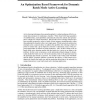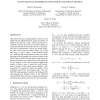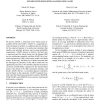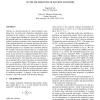CVPR
2011
IEEE
14 years 3 months ago
2011
IEEE
Active learning techniques have gained popularity in reducing human effort to annotate data instances for inducing a classifier. When faced with large quantities of unlabeled dat...
PKDD
2010
Springer
14 years 3 months ago
2010
Springer
Active learning [1] is a branch of Machine Learning in which the learning algorithm, instead of being directly provided with pairs of problem instances and their solutions (their l...
PAIRING
2010
Springer
14 years 3 months ago
2010
Springer
Abstract. This paper describes a new method in pairing-based signature schemes for identifying the invalid digital signatures in a batch after batch verification has failed. The me...
BMCBI
2008
14 years 4 months ago
2008
Background: Genome-wide association studies (GWAS) aim to identify genetic variants (usually single nucleotide polymorphisms [SNPs]) across the entire human genome that are associ...
WSC
1997
14 years 7 months ago
1997
This article discusses implementation issues for the LBATCH and ABATCH batch means procedures of Fishman and Yarberry (1997). Theses procedures dynamically increase the batch size...
WSC
2004
14 years 7 months ago
2004
We discuss ASAP3, a refinement of the batch means algorithms ASAP and ASAP2. ASAP3 is a sequential procedure designed to produce a confidence-interval estimator for the expected r...
WSC
2001
14 years 7 months ago
2001
Variance is a classical measure of a point estimator's sampling error. In steady-state simulation experiments, many estimators of this variance--or its square root, the stand...




